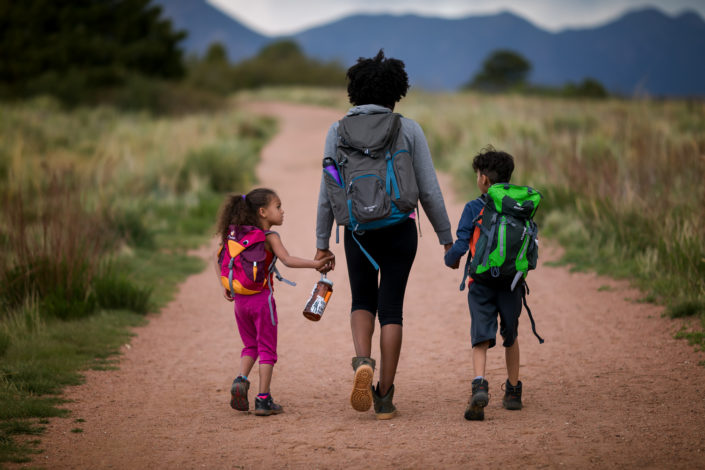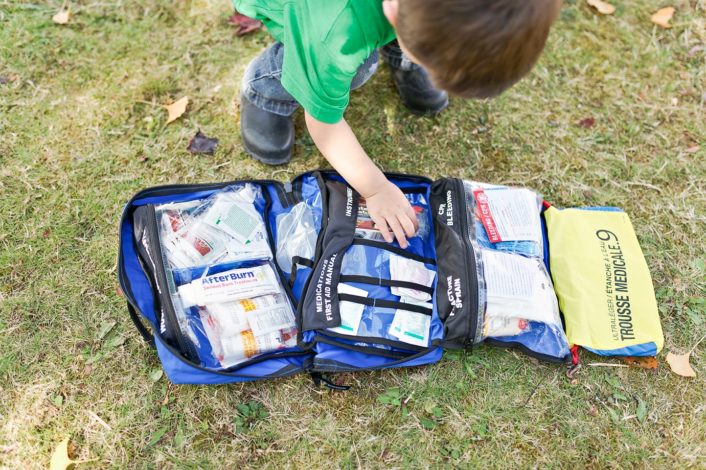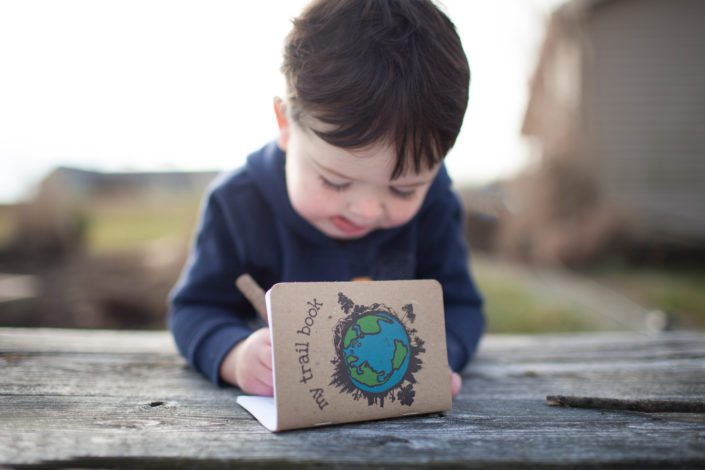Hiking Essentials: What to pack for a day hike
You’ve made up your mind. You’re going to try this hiking thing that everyone keeps talking about. Or maybe you are still on the fence whether it will be right for you. On the other hand, you may be no stranger to hiking, but you’re unsure of what hiking essentials you’re “supposed” to bring with you on a day hike.
Regardless of whether you're a beginner hiker or seasoned pro, the question of “What do I bring with me?” has likely crossed your mind at some point. I often get this question when I invite people to join me for a day hike. Instead of stressing out about whether or not you have everything you need, here's a list of hiking essentials for a day hike - and extra items to consider throwing in your pack - for your next day hike adventure.


 While this list may appear daunting, once you have packed these hiking essentials and extras, you can simply replace what you use along the way and hike with confidence that you are prepared for whatever comes your way. Knowing that I can simply grab my day pack and head out the door gives me little excuse to skip a hike!
While this list may appear daunting, once you have packed these hiking essentials and extras, you can simply replace what you use along the way and hike with confidence that you are prepared for whatever comes your way. Knowing that I can simply grab my day pack and head out the door gives me little excuse to skip a hike!
Choose a day pack that suits your needs
Before I get into what to put INSIDE the pack, let’s talk about the actual day pack. There are a ton to choose from, and your choice relies mainly on personal preference. For example, I prefer a pack that is compatible with a hydration system, which means it has a special compartment that fits a water bladder and allows the bladder hose to secure to the strap of the pack. However, this is not a necessity! Also, the size you need will depend on the amount of gear you carry and how many people are in your party. For example, if you hike with kids, you may have to stuff a few extra items (more layers, more food, etc.) than if you are hiking alone. I recommend finding a local retailer like REI that sells a variety of packs so you can try them out to see what will fit your needs. Personally, I recommend Deuter products since they are of high quality and offer a ton of features. They even have a line of backpacks, the SL series, which is specifically designed to fit a female body better.
Hiking Essentials to Carry in Your Pack
Now that you have your pack, let’s talk about what you should pack. The following is an expert-recommended list of 10 essentials from REI that should always be in your hiking pack. While this list may look overwhelming, you likely already carry many of these items with you on hikes. Most items on this list are very compact and should not weigh down your pack. 1. Navigational tools – Nowadays, most cell phones have GPS functions. However, it is a smart idea to always carry a map with your planned route marked, along with a compass (and know how to use it) in case your phone or GPS unit dies (or decides it is too cold to work). 2. Sun protection for eyes and skin – This is a necessity even in the winter since the glare off the snow can be harmful on the eyes. You will want sunglasses that fully block both UVA and UVB rays. Also, regardless of the season, you will need sunscreen for all exposed skin (especially your lips!) with an SPF rating of at least 15. 3. Insulating layers – Carrying an extra, packable layer of clothing, such as a synthetic mid-layer jacket, can help in case the weather turns bad. It is easier to remove layers if you get warm than add ones you didn’t bring if you get cold! 4. Light source – The type is a matter of preference. A headlamp provides hands-free illumination, though a flashlight can cast a powerful beam as well. Extra batteries for either choice should also be included. 5. First Aid kit – Pre-assembled kits can take the guesswork out of what to include in your kit, and personalized items (such as medications) are easy to add yourself. The size of your party will dictate the size of your kit. We recommend a pre-packaged kit from Adventure Medical Kits, which has a wide variety of kits to choose from depending on your activity. The kits have organized pockets for different medical needs along with a map that shows where everything is in the kit. 6. Fire supplies – A lighter is the most convenient, though waterproof matches are also good to have as a backup. You will also want to include a Firestarter such as small candles, tinder or lint trappings. 7. Multi-tool or quality knife – Useful for food prep, making kindling, first aid and other emergency situations. 8. Extra food – It’s a good idea to include at least an extra days’ worth of food, such as vacuum-sealed meals, energy bars, nuts and beef jerky. 9. Extra water – Carry more than you think you will need, along with a simple way to purify water, such as a small purifier or water purification tablets. 10. Emergency shelter – If you get stranded, you will need a safe, dry place to spend the night. This can include an ultralight tarp, a simple space blanket or even a large plastic trash bag.
A few extras to consider for a day hike
These items have all come in handy for me at one point or another. The need for some of these items may differ based on your location or weather conditions, but I recommend keeping these in mind as you plan a day hike since they can contribute to a more comfortable, positive hiking experience. 1. Trekking poles – While poles are not an essential item, they can definitely make your hike more comfortable depending on the terrain. I rarely used poles when I first started out, but I prefer to have them now with the rocky terrain of the Southern Adirondack Mountains (not to mention the fact that my joints aren’t what they used to be). In addition, they can easily be attached to most day packs when not in use. 2. Insect repellent – Depending on your location, having insect repellent on hand could mean the different between a comfortable hike and a miserable bite-infested nightmare. When I lived in Colorado, I rarely remembered to apply bug spray (a mistake, I know, since ticks can still be a problem). After moving to Georgia and then Upstate New York, I NEVER forget the insect repellent unless weather conditions are frigid since mosquitoes, gnats, ticks and other annoying/dangerous insects are abundant! 3. Duct tape – They don’t call it the “Universal fix-it” for nothing. You never know when it will come in handy. For example, on one particular day hike in Colorado, I was four miles in on an 8-mile loop when the sole of my hiking boot almost fully detached itself from the rest of the shoe. Luckily, I had brought some duct tape with me and wrapped it around my shoe, reattaching the boot sole so that I could hike (albeit a bit uncomfortably) back to the parking lot. Needless to say, I pretty much always carry duct tape with me! Wrapping long strips around a Popsicle stick or even your hiking poles can make it extra packable, taking up little to no room in your pack. 4. Hand and foot warmers – These ultra-packable, long-lasting bags have saved me more than once when I didn’t dress appropriately for a cold hike. If you are stranded overnight, they can help keep you comfortable when the temperature drops. 5. Extra phone battery or portable charging device – Depending on your phone, you will likely need a portable charging device vs. an extra battery. These have become more compact and affordable in recent years, and some can fully charge your phone multiple times. 6. Whistle – While playing Marco-Polo with your hiking companion when you wander too far off the trail for a potty break may sound like fun to some, having a whistle on hand can make things a little less complicated (and save your voice from getting hoarse). Not to mention if you really get into a pickle and need to signal for help! 7. Toilet paper or tissues – This is handy for runny noses and potty breaks, just don’t forget to pack it out with you. Depending on the length of the hike, I usually bring some tissues in a waterproof bag (such as a Ziploc bag) since it takes up less room in my pack. However, if you are going for a long day hike and have multiple companions, a roll of toilet paper may be a better option. 8. Extra storage bags – Storage bags can be used for a number of things, including wet gear, trash, toilet paper, etc. I prefer to use an eco-friendly wet bag since they can be washed and reused (like the kind that holds wet diapers), but plastic bags work as well. 9. Journal – I have recently started bringing a small journal with me on hikes so that I can jot down experiences, things to remember for next time, thoughts/inspirations, etc. If I don’t get it down while it’s happening, I tend to forget by the time I get back to the car. It has helped me get more out of my experiences with nature, and makes for a great keepsake in the future. While this list may appear daunting, once you have packed these hiking essentials and extras, you can simply replace what you use along the way and hike with confidence that you are prepared for whatever comes your way. Knowing that I can simply grab my day pack and head out the door gives me little excuse to skip a hike!
While this list may appear daunting, once you have packed these hiking essentials and extras, you can simply replace what you use along the way and hike with confidence that you are prepared for whatever comes your way. Knowing that I can simply grab my day pack and head out the door gives me little excuse to skip a hike!
Read more:
What other items do you include in your pack? Let us know in the comments below! Photos by Krystal Weir, Jennifer Campbell and Kendra Reeder.Related Content




Comments